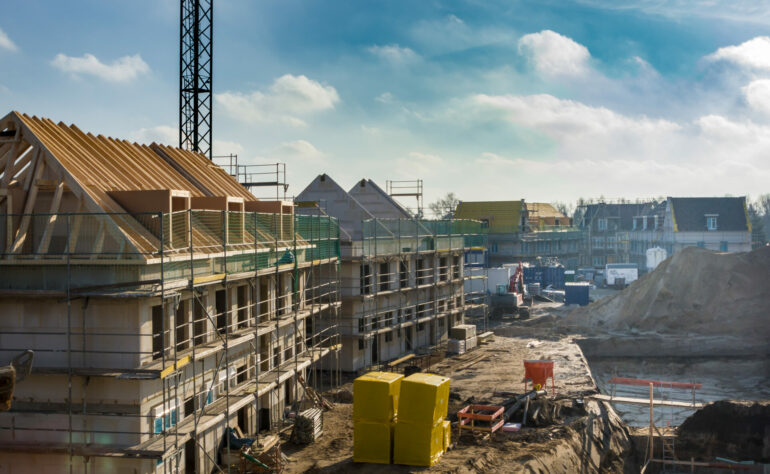The value of new construction work in Great Britain increased by 4.2% in 2023, reaching a record high of £139,029m, according to data from the Office for National Statistics (ONS).
This growth was driven by an increase of £2,050m in the private sector and £3,578m in the public sector.
However, construction new orders fell by 16.0% to £67,885m, primarily due to declines in public infrastructure, private commercial, and private housing.
The only sector that showed growth was public housing.
In Q3 2023, there were 364,514 VAT and PAYE registered construction firms in Great Britain, a decrease of 2.6% compared to 2022.
Construction employment, excluding self-employment, rose by 0.2% to 1.4 million workers, with Scotland contributing the most growth at 1.4%, while Wales grew by 0.7% and England showed no change.
The all-work construction Output Price Index saw an annual price increase of 2.6% in December 2023.
Michael Wynne, co-founder of the housebuilder Q New Homes, said: “While we are coming to the close of 2024, we finally have the full picture on the state of the construction industry last year, and it’s a mixed bag in terms of the levels of investment versus the amount of properties being built.
“The value of construction projects increased to reach a new record high, which could simply be put down to the high levels of inflation we saw last year and its impact on the cost of building materials.
“However, it could also be the result of more investment into developments to make them built to last and more sustainable.”
Wynne added: “At the same time, the 16% drop in new construction orders signals a concerning slowdown in future projects, especially in private housing, commercial spaces and public infrastructure.
“This decline risks limiting the availability of innovative, sustainable homes in the market.
“There was a drop in new orders for private housing last year which is a worrying sign that recent governments have not prioritised the need to build.
“However, it is positive to see public housing see a marginal rise, as cost-of-living concerns have shaken households and highlighted the greater need for affordable housing.”
Wynne continued: “We are building homes with their own renewable energy sources so that they are carbon-neutral and ultimately this costs more to build, but saves money on energy bills for the owner once it is sold.
“The current landscape presents a clear need for more investment in sustainable developments. Building net-zero homes not only offers a solution to the climate crisis but also long-term cost savings for homeowners.
“It is welcome news to see more people employed in construction. This is a thriving industry that is sometimes overlooked by school-leavers, but with such important milestones to work towards in terms of housebuilding and reducing carbon emissions, we need all hands on deck.”




